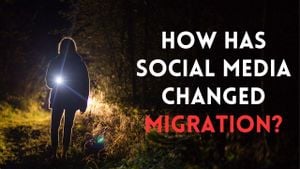Word games have gained immense popularity lately, and at the forefront of this trend are two iconic games: the New York Times (NYT) Wordle and Connections. Both games engage players' minds but do so through distinct mechanisms. On November 13, 2024, enthusiasts of these puzzles eagerly anticipated the latest challenges and potential strategies to conquer them.
The day kicked off with Wordle puzzle number 1243. Even seasoned players felt the pressure, and many turned to guides for assistance. The challenge lay not just in guessing the correct five-letter word, but also deciphering hints and strategies to maximize their chances of success.
For Wordle today, the answer was 'PRIMP,' meaning to groom oneself or dress up in a fussy way. Hints provided before the reveal indicated the answer contained at least one vowel and featured repeating letters. The recommended starting words—like ARISE, CRANE, or IDEAL—proved helpful for many players trying to navigate the tricky path to 'PRIMP.' According to The New York Times Games, the average player took about 4.7 attempts to guess the word, highlighting the challenging nature of this day’s puzzle.
Meanwhile, over on another section of the New York Times Games, the “Connections” puzzle was equally enticing. Unlike Wordle, which focuses solely on word guessing, Connections tests players’ ability to categorize 16 random words correctly. Each player must sift through the words and group them based on thematic connections. Puzzle #521 for November 13, 2024, had players guessing which words belonged together—quite the mental exercise!
Today’s Connections categories were as follows:
- Yellow: Things That Are Yellow
- Green: Building Add-Ons
- Blue: Concerns for A Dentist
- Purple: Words That Seem Longer Written Than Spoken
To help players grasp these categories, hints were provided. For example, the yellow category simply stated, 'The answer is the category'—a cheeky nod to the simplicity some might find therein. The purple category, on the other hand, presented more of a challenge, prompting players to mull over words such as ‘Colonel’ and ‘Worcestershire,’ which famously trip up even the best of linguists.
After some head-scratching, players began to piece together the correct groups. For the yellow category, participants grouped words like 'Canary,' 'Lemon,' 'Minion,' and 'Mustard'. Each word shared the common characteristic of being yellow. The green category revealed 'Addition,' 'Annex,' 'Extension,' and 'Wing'—all terms associated with architectural elements. The blue category included dental health concerns: 'Calculus,' 'Cavity,' 'Plaque,' and 'Tartar.' Interestingly, 'Calculus' caught many players off guard, as its connection to dentistry is less commonly known.
The purple category required players to think critically and creatively, arriving at words such as 'Pharaoh' and 'Wednesday,' which often seem complicated when pronounced. This is the level of intrigue Connections offers, as it forces players to think outside the box and challenges their vocabulary knowledge.
Many players express their experiences on social media platforms, sharing their results and strategies. It's become somewhat of a community activity—people proudly announcing their victories, processing defeats, and seeking advice from fellow enthusiasts. The buzz around these games only intensifies as more people engage and participate.
While both Wordle and Connections lean toward linguistic acumen, they test different skills. Wordle focuses on direct word guesses and deductive reasoning, honing players' ability to preemptively eliminate possibilities based on feedback. Conversely, Connections invites players to tap on associative thinking, requiring them to find relationships between seemingly disparate words. This divergence has sparked discussions among fans who debate which game they find more enjoyable or challenging.
Word games like these are more than just pastimes; they stimulate cognitive activity, sharpen vocabulary, and encourage social interaction. Players gather together to solve puzzles, share insights, and celebrate discoveries, making it more than just individual victories.
Both games offer distinct experiences—players can navigate between the two, finding their groove according to their preferences. Are you up for the challenge of deciphering clues and categorizing words? Or do you prefer the thrill of racing against the clock to guess the day’s elusive word? Whatever your choice might be, two exciting challenges await every day.
With the continued growth of these word games, it's fascinating to see how they’ll evolve. New strategies, trends, and potentially different mechanics might emerge as developers seek to engage their audiences even more. Fans are buzzing, and for now, the spotlight is on the players, eager for more puzzles to solve.
The allure of word games like Wordle and Connections lies not only in the intellectual challenge they present but also their capacity to bring people together. Each player's unique approach and styles contribute to vibrant discussions about strategies and experiences. Both games encourage users to think differently and develop problem-solving skills, making them beloved by the masses.
So, what's next for today's puzzle solvers? With PRIMP behind you and those Categories unlocked, perhaps it's time to turn to tomorrow's puzzles. Anticipation builds as the clock ticks down to midnight when new games roll out—offering fresh challenges to tackle and the ever-present chance to improve your skills!



